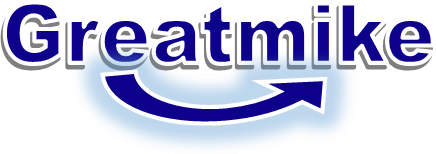Cascading Style Sheets (CSS) is a fundamental technology for web design that allows you to control the layout, appearance, and overall aesthetics of a website. For designers and developers in Cameroon, mastering CSS is essential for creating visually appealing and user-friendly websites. This guide covers the basics of CSS and its importance in web design.
1. What is CSS?
Definition
- Cascading Style Sheets (CSS): A stylesheet language used to describe the presentation of a document written in HTML or XML. CSS controls the layout, colors, fonts, and overall style of web pages.
Importance
- Separation of Content and Presentation: CSS allows you to separate the content of your website (HTML) from its presentation, making it easier to maintain and update.
2. How CSS Works
Selectors
- What are Selectors? CSS uses selectors to target HTML elements. Common selectors include:
- Element Selector: Targets all instances of a specific HTML element (e.g.,
pfor paragraphs). - Class Selector: Targets elements with a specific class attribute (e.g.,
.class-name). - ID Selector: Targets a unique element with a specific ID (e.g.,
#id-name).
- Element Selector: Targets all instances of a specific HTML element (e.g.,
Properties and Values
- CSS Properties: Each property defines a specific aspect of the styling (e.g.,
color,font-size,margin). - Values: Each property is assigned a value (e.g.,
color: blue;,font-size: 16px;).
Example
cssCopyh1 {
color: blue;
font-size: 24px;
}
3. CSS Syntax
Basic Structure
- CSS Rule Set: A CSS rule set consists of a selector followed by a declaration block enclosed in curly braces.
- Declaration Block: Contains one or more declarations (property-value pairs) separated by semicolons.
Example
cssCopybody {
background-color: #f0f0f0;
font-family: Arial, sans-serif;
}
4. CSS Box Model
Understanding the Box Model
- Box Model Components:
- Content: The actual content of the box (text, images).
- Padding: Space between the content and the border.
- Border: A line surrounding the padding and content.
- Margin: Space outside the border, separating the element from others.
Visual Representation
- Understanding the box model is crucial for layout design and spacing between elements.
5. CSS Layout Techniques
Flexbox
- Flexbox Layout: A one-dimensional layout method that allows for responsive design. It enables easy alignment and distribution of space among items in a container.
Grid
- CSS Grid Layout: A two-dimensional layout system that provides more control over the placement of elements within a grid structure.
Example of Flexbox
cssCopy.container {
display: flex;
justify-content: space-between;
}
6. Responsive Design
Media Queries
- What are Media Queries? Media queries allow you to apply different styles based on the screen size or device type, ensuring your website looks good on all devices.
Example
cssCopy@media (max-width: 600px) {
body {
background-color: lightblue;
}
}
7. CSS Frameworks
Popular CSS Frameworks
- Bootstrap: A widely-used framework that simplifies responsive web design with pre-defined classes and components.
- Tailwind CSS: A utility-first framework that allows for rapid styling with minimal custom CSS.
8. Best Practices for CSS
Organizing Styles
- Modular CSS: Break your CSS into smaller, reusable components to improve maintainability.
- Commenting: Use comments to explain complex styles or sections of your CSS.
Performance Optimization
- Minification: Minify CSS files to reduce file size and improve loading times.
- Avoid Inline Styles: Keep styles in separate CSS files rather than inline to maintain cleaner HTML.
Conclusion
Understanding the basics of CSS is crucial for web designers and developers in Cameroon. By mastering CSS, you can create visually appealing, responsive, and user-friendly websites that stand out in the digital landscape.
Take Action
Start experimenting with CSS today! Create a simple webpage and apply different styles to see how CSS can transform your design.
